A successful streak of 18 launches, the first launch of a used Falcon 9 launcher, the first flight of a used Dragon spacecraft, and even a used spacecraft launched on a used launcher - 2017 was one of SpaceX's most successful years since its inception 15 years ago.
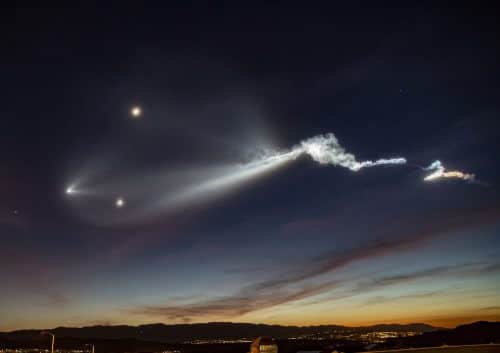
The successful launch of ten Iridium communications satellites by a used SpaceX Falcon 9 launcher on Friday, amazing the residents of California in the bright and beautiful trail he left behind, and some of them even thought it was a UFO. It was a fitting end to SpaceX's remarkable year in space.
2017 was one of SpaceX's most successful years since its inception in 2002, if not its most successful to date. After two rather difficult years, with The explosion of the Falcon 9 at launch in June 2015, AndAnother explosion of the launcher (and with it the Israeli satellite Amos 6) before a static combustion test in September 2016, the past year was first and foremost an uneventful one for the company. The high rate of launches, which averaged 1.5 per month, showed that the company knows how to learn from past mistakes and increase the safety of its operations.
Friday's successful launch was the company's last for the year, andThe 18th in number since its inception. This is an increase of 125% from the 8 launches it carried out in 2016. SpaceX thus broke the launch record of a private company. Until now it was owned by the ULA company, which is jointly owned by Boeing and Lockheed Martin, which in 2009 Has performed 16 launches. ULA, whose fleet of launchers includes the Atlas 5 and Delta 4 vehicles, was until recently a monopoly in the US space launch market, but SpaceX has proven that its innovation pays off.
The success of SpaceX was also manifested in the first launch of security payloads for the US Department of Defense. Until now, ULA was the only company that enabled the launch of such cargoes for the US government, which could not turn to foreign companies for this purpose. This year SpaceX launched the The NROL-76 spy satellite of the "National Reconnaissance Office" (NRO), fThe secret robotic space plane of the US Air Force, X-37B, which in its four previous flights was launched using ULA's Atlas 5 launcher.
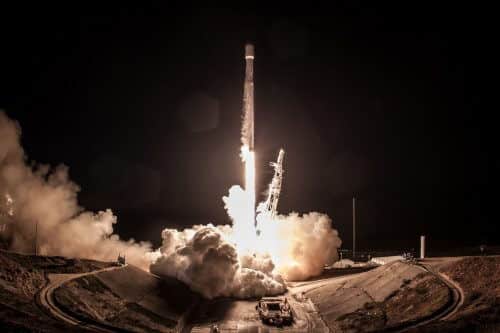
SpaceX has not only eaten away at the market share of its American competitors, but also at the global space launch industry. The company's Falcon 9 launched more this year than any other launch vehicle in the world. in 2017 82 successful launches were made In total (although several more launches are planned for the last days of the year), and the company's 18 launches represent a significant market share of 22%.
But the most important success of SpaceX this year is undoubtedly the enormous progress it managed to make, in one year, in the revolution of multipurpose launchers. Elon Musk, the founder and CEO of the company, has been trying for a long time to make launchers multi-purpose, thereby significantly reducing the costs of launching into space (Musk usually compares the existing launch prices to the prices of airline tickets, if each plane could only make one flight before sitting).
The multi-use revolution started two years ago, when the company succeeded land for the first time The first stage of the Falcon 9, which is the central and most expensive part of the vehicle. Since then, the company has made 20 such successful landings, on a land pad or a mobile rig in the ocean. This year, she is Re-used those first steps for the first time, with the successful launch of the SES-10 communications satellite in March, after which the used first stage returned to Israel and made a successful landing for the second time.
The company launched a total of five Falcon 9 vehicles this year with a used first stage. This is an amazing achievement that was carried out very quickly, especially for an industry that requires strict safety tests to avoid painful and sometimes even financially fatal failures.
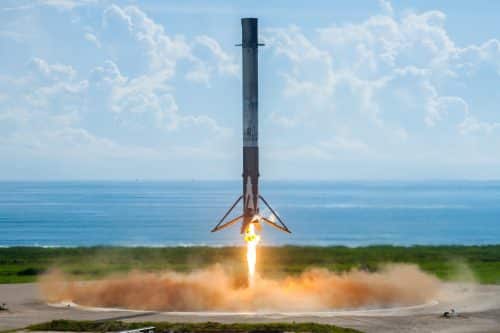
the company's ambitions They even won a Gushpenka from the space agency NASA, which authorized it to use a used Falcon 9 launcher for the CRS-13 mission on December 16, in which an unmanned Dragon spacecraft was sent to bring supplies and scientific equipment to the International Space Station. The agency's decision, which is known for its caution and strictness, was made after a thorough examination of the safety of using the used launcher, and may strengthen the confidence of other customers, such as commercial companies and the US Department of Defense, to agree to use used launchers.
Musk's multi-use vision is not only expressed in the launcher - SpaceX also launched two used Dragon spacecraft towards the space station. It is worth noting, however, that at least regarding the first used spacecraft that was sent In June, Musk Please specify Preparing it for relaunch cost almost as much as building a new Dragon spacecraft.
2018 – many challenges, great promises
Despite all the impressive successes and achievements of SpaceX in the past year, the next year may surpass it with a number of new and fascinating missions, but ones that will pose quite difficult challenges to the company.
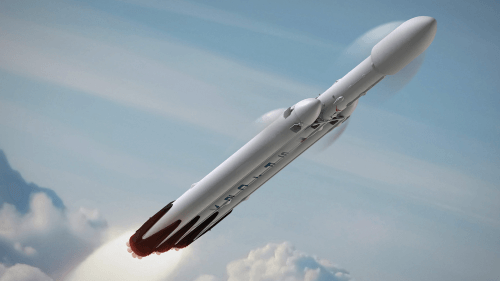
Already in January, at least according to the current planning, we are expected to see the launch of the company's new vehicle, the Falcon Heavy launcher. Its basic design is a standard two-stage Falcon 9, with two first stages that serve as side boosters, significantly enhancing its launch capabilities.
If the test flight is successful, the Falcon Heavy will become, some 7 years after it was first announced, to the most powerful active launcher in the world. However, Elon Musk has warned several times that the flight may end in failure, due to the difficulty of predicting how the giant rocket will react to the many vibrations and loads it will experience during takeoff.
The upcoming flight is expected to grab headlines around the world, especially due to The weird and wonderful cargo you will launch into space - Elon Musk's private Tesla Roadster car, which will be launched into an elliptical orbit around the Sun, which will bring it to the distance of Mars from the Sun.
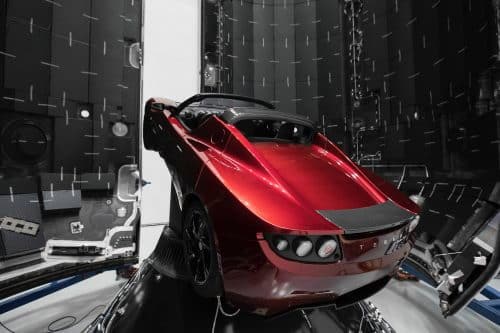
A more important challenge than the heavy Falcon faces the company next year - sending humans into space. the company chosen In 2014, by NASA to launch American astronauts to the International Space Station, thus restoring to the USA the ability to launch astronauts from American soil, which was lost to the power after the grounding of the space shuttles in 2011. Together with SpaceX, a second company, Boeing, was chosen to carry out the manned flights into space. Both companies plan, as of today, to carry out their first manned launch next year - SpaceX in August, and Boeing in November.
As far as SpaceX is concerned, sending humans into space involves several challenges. First, the company is developing a new, manned model of its Dragon spacecraft, Dragon 2, and plans to perform the spacecraft's first unmanned demonstration mission this April. Before being able to launch humans in the new spacecraft, the company will have to carry out another demonstration mission, in which the launch will be intentionally canceled in the middle of takeoff, in order to test the ability of the spacecraft to detach and escape from the launcher, thereby enabling the crew's lives to be saved in the event of a launch malfunction.
Second, because the company intends to put into operation a new and last model of the Falcon 9, known as "Block 5", NASA You will require from the company to make several successful flights in the new model, before it will authorize it to launch humans on it.
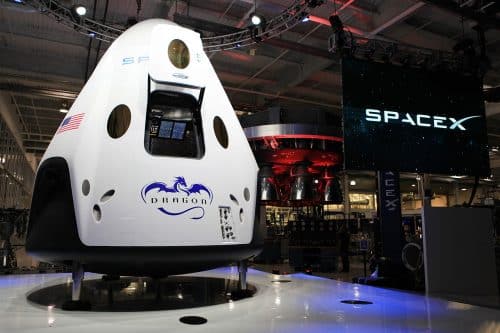
SpaceX is developing the new model of the Falcon 9 to make it easier and faster to reuse the launcher, and to allow it to be reused more than once, a goal that SpaceX has not yet been able to realize. Gwen Shotwell, President and Chief Operating Officer of the company, saying Because the "Block 5" of the Falcon 9 will be able to perform about 12 repeated launches. The new model will present higher thrust, and other improvements such as Landing legs that are able to fold back. In addition to the launch of the improved model of the Falcon 9, Elon Musk stated that the company intends to further increase the rate of its launches, and perform about 30 launches next year.
2018 will be the year that SpaceX will first test its Internet satellite array, on it He declared Elon Musk in 2015. The company will launch two prototypes of the communication satellites at the beginning of the year, MicroSat 2a and 2b. The satellites will be launched as additional cargo Launching the Spanish radar satellite Peace, which is currently scheduled for January 30. The satellite array is expected to include 4,425 small satellites that will be developed, built and launched by SpaceX, and will operate in a low-Earth orbit at an altitude of approximately 1,100 to 1,350 km. The satellites will provide, According to the company, fast and cheap global Internet communication, with a high bandwidth of up to 1Gbps per user. The launch campaign of the operational network expected start only in 2019.
Next year, the company will also begin expanding its activities regarding the plan to man Mars, which Musk announced in September 2016. This year Musk presented Update to the program, in order to answer a number of problems in the previous design, such as a certain reduction in the size of the giant launcher BFR (short for Big Falcon Rocket), which would allow it to carry out commercial launches into orbit around the Earth and be more profitable. Musk noted then that the company will start in the second quarter of 2018 the construction of the first model of the BFR.
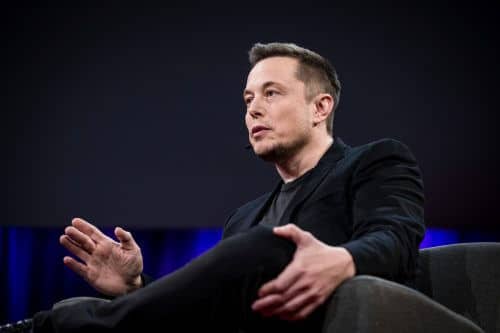
In addition, the company She announced It intends to launch two space tourists aboard a Dragon spacecraft into free orbit around the moon at the end of 2018. Its ability to meet the mission's tight schedule depends on the successful launch of two key components included in it: the heavy Falcon, which will only make the mission possible through its powerful launch capability, and the manned Dragon spacecraft . It is likely, however, especially in light of the company's emphasis on completing the task at the end of the year, that it will eventually be postponed, at least until 2019.
Despite the many challenges ahead, SpaceX's many successes in the past year have shown that it should not be underestimated in vision of the company's founder and CEO, Elon Musk, to make the space launch market cheaper and more accessible, thereby enabling the expansion of the human race into outer space.
See more on the subject on the science website:
- Musk's Tesla car is getting ready to launch near Mars
- The heavy Falcon - the launcher that will be the most powerful in the world
- SpaceX launched a used Dragon spacecraft, atop a used Falcon 9 launcher
- Elon Musk reveals the way he will pay for his giant Mars rover
- SpaceX plans to launch two space tourists next year for a flight around the moon

3 תגובות
His failure in blowing up the last Israeli communication satellite (probably forever) Amos 6 is bad for us Israelis.
And also for the enterprise that relied on our satellite in collaboration with Facebook to provide satellite internet to Africa and also to replace the old Israeli satellites.
Probably lost forever because we had to rent a Chinese satellite instead.
My time is permanent and Spice X has ruined our industry. (Surveillance and spy satellites are not communication satellites. And hello and goodbye)
to green,
Thank you very much 🙂
Regarding the satellites, you are right and I added a paragraph about it, thanks.
Regarding production prices - Musk said vigorously The cost of the first stage is about 70% of the total cost of the launcher, but I don't think it is correct to calculate it from the total cost of the 62 million dollars, because it also includes the company's profit. as per This report, there is an estimate that about 40% of the price goes to profit, that is, about 37 million dollars for the development of the launcher, which means about 26 million dollars for the first (new) stage. All of this is of course assuming that the initial estimate regarding the profit is correct. As for the top tier, I'm not sure, though That's the answer of Musk 🙂
As for the cargo cover, I don't really know why it's so expensive, but the explanations In this link They seem satisfactory to me.
Hello Elisaf, first of all, I enjoy reading your fascinating and detailed articles every time, good luck in the future.
A. You forgot to add the SpaceX internet satellite project (a demonstration satellite should be launched at the beginning of 2018)
B. Regarding the Falcon 9 production prices, do you have an estimate of how much it costs to produce the first stage out of the full price -62
million dollar? And the second step?
One more thing, it was previously published that the company parachuted the reusable launcher canopy and it was then said to cost 6 million dollars, I can't understand what could cost so much there, do you have any idea?
Thanks.